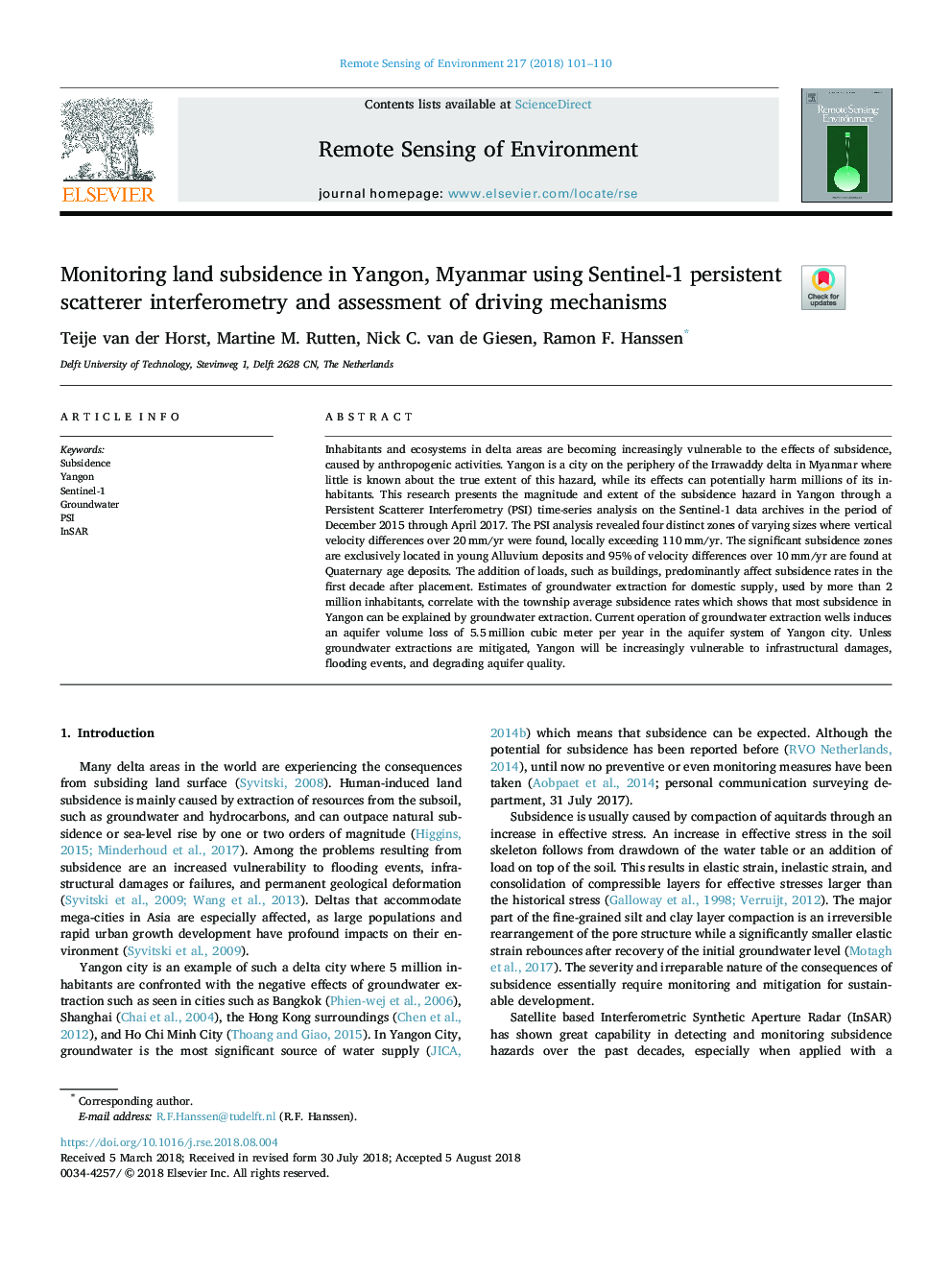| Article ID | Journal | Published Year | Pages | File Type |
|---|---|---|---|---|
| 10113957 | Remote Sensing of Environment | 2018 | 10 Pages |
Abstract
Inhabitants and ecosystems in delta areas are becoming increasingly vulnerable to the effects of subsidence, caused by anthropogenic activities. Yangon is a city on the periphery of the Irrawaddy delta in Myanmar where little is known about the true extent of this hazard, while its effects can potentially harm millions of its inhabitants. This research presents the magnitude and extent of the subsidence hazard in Yangon through a Persistent Scatterer Interferometry (PSI) time-series analysis on the Sentinel-1 data archives in the period of December 2015 through April 2017. The PSI analysis revealed four distinct zones of varying sizes where vertical velocity differences over 20â¯mm/yr were found, locally exceeding 110â¯mm/yr. The significant subsidence zones are exclusively located in young Alluvium deposits and 95% of velocity differences over 10â¯mm/yr are found at Quaternary age deposits. The addition of loads, such as buildings, predominantly affect subsidence rates in the first decade after placement. Estimates of groundwater extraction for domestic supply, used by more than 2 million inhabitants, correlate with the township average subsidence rates which shows that most subsidence in Yangon can be explained by groundwater extraction. Current operation of groundwater extraction wells induces an aquifer volume loss of 5.5â¯million cubic meter per year in the aquifer system of Yangon city. Unless groundwater extractions are mitigated, Yangon will be increasingly vulnerable to infrastructural damages, flooding events, and degrading aquifer quality.
Related Topics
Physical Sciences and Engineering
Earth and Planetary Sciences
Computers in Earth Sciences
Authors
Teije van der Horst, Martine M. Rutten, Nick C. van de Giesen, Ramon F. Hanssen,
